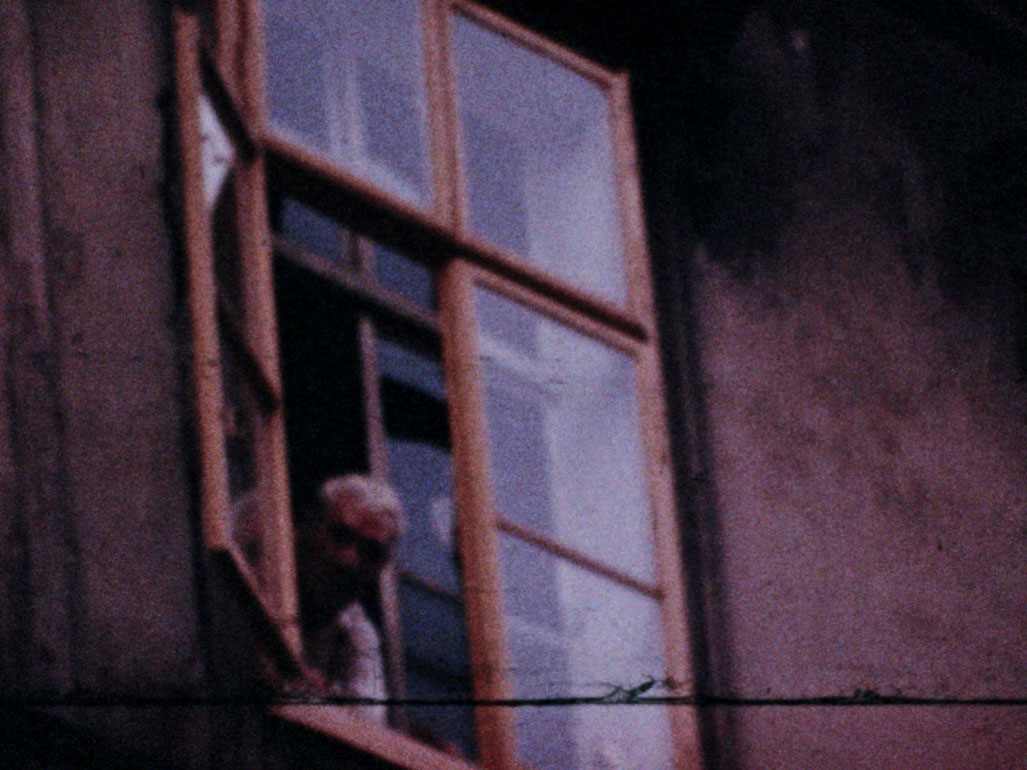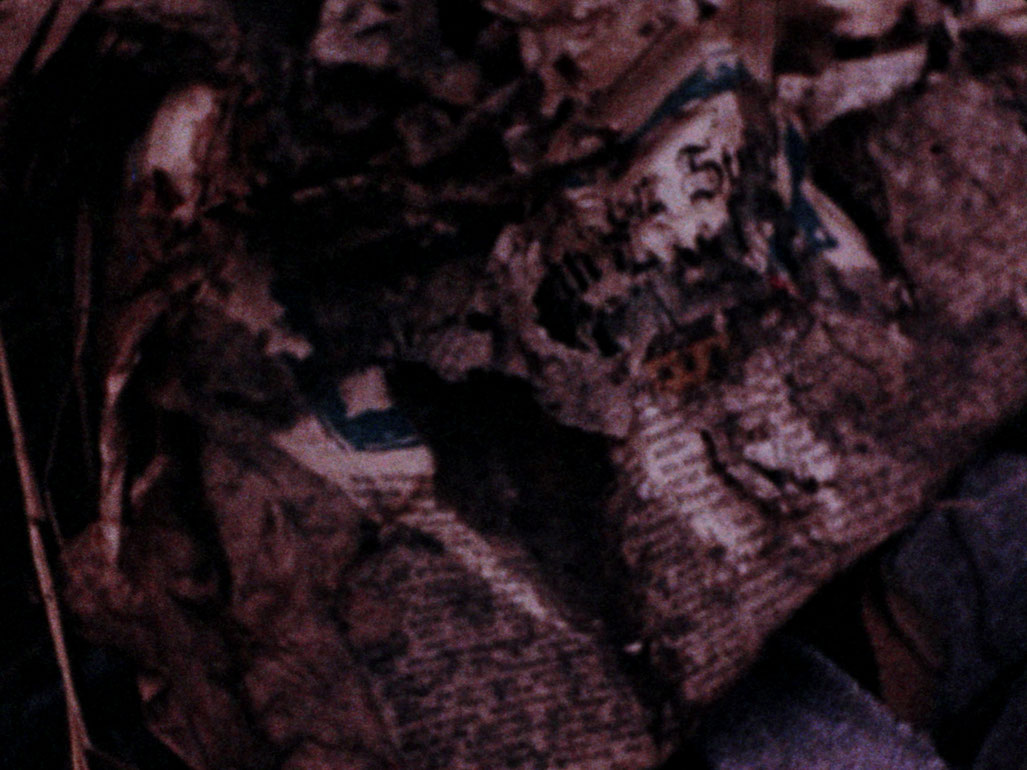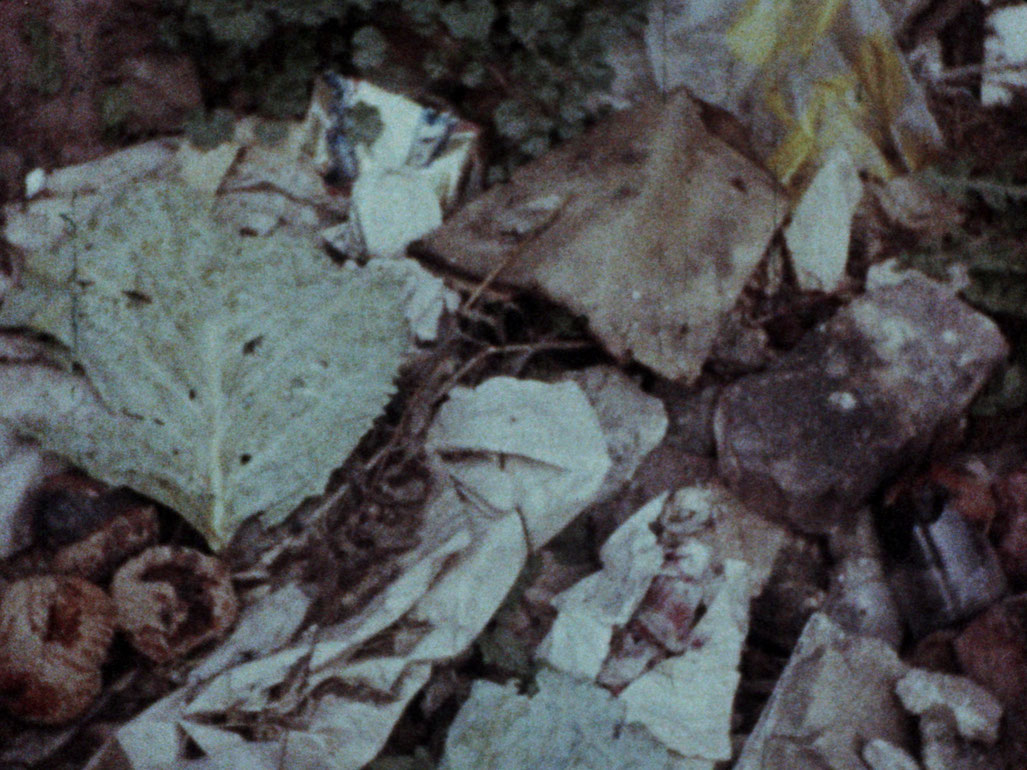5/62 People Looking out of the Window, Trash, etc.
Almost as if entering the picture frame by chance, mute characters lean out of Viennese apartment windows, simply to have a look. Under certain historical conditions social apathy can abruptly turn into euphoric collaboration, and, yes, massive aggression. This understanding is kept alive in People Looking Out of the Window, Trash, etc. Kren edits according to a predetermined serial plan, systematically reducing the loaded nature of what is represented in favor of structure and form. (Elisabeth Büttner)
Following early experiments on 8mm between 1953 and 1957, Kren made his first 16mm film, Versuch mit synthetischem Ton (1957), including a drawn soundtrack and began to develop the notions of formal relationships between simple images. But his next three films, made between then and 1961, showed the systematic direction of his work most clearly: 48 Köpfe aus dem Szondi Test (1960) and Bäume im Herbst (1960) being shot according to system, and Mauern-Positiv-Negativ und Weg (1961) being edited that way. It is also evident in these films and is confirmed in his next, Fenstergucker, Abfall etc. (1962), that even if Kren rejected poetic or narrative intention, the images of his work were in no way neutral, arbitrary or convenient fillers for a mathematical system. (Malcolm Le Grice) film´s title roughly translates as "window lookers, garbage, etc." Kren juxtaposes blocks of images in montage sections cut to different rhythms and speeds. The "window lookers" - old people who rest elbows on pillows at windows - view the activities on the streets below: this action begins and ends the film and is repeated within the work many times. There are also sections depicting debris and broken glass, pedestrians, and positive and negative images of the moon. Splice marks, especially during the window scenes, are apparent, punctuating the silent work and reminding us of the film. While we may make associations among the image clusters, there is no narrative per se, and the rapid cutting purposefully undercuts any emotional expressiveness the material might contain.
(Regina Cornwell, The Other Side: European Avant-Garde Cinema 1960-1980)
Claus Philipp zu "5/62 Fenstergucker, Abfall etc." von Kurt Kren
Einer der schönsten Filme von Kurt Kren. Stupend in seinem schamlos leichtfertig anmutenden Einsatz naheliegender Motive, die erst in Rhythmusstörungen und manierierter Kadrage veredelt werden: Großstadt-Voyeure blicken uns an, wir spazieren durch die Stadtwelt, gegen zerbrochene Flaschen, hastig gerauchte Zigaretten; Abfall im Niemandsland neben Blicken hinunter auf Passanten. Ein Werk, zusammengesetzt aus scheinbaren Zufälligkeiten und oft unscharf gefilmten Bedeutungslosigkeiten, die sich später in den aktionistischen Dokumenten Krens ungleich heftiger vermengen sollten.
Hier kommen der Müll und die Stadt noch relativ ungezwungen zusammen mit einer bei Kren so oft provokant stummen Tonspur - ein klassisches Lehrstück also auch für die Heerscharen jugendlicher TV-Sozialpornographen, das man nur immer wieder anschauen kann, anstatt es totzureden. Wer das Wien, das Österreich der frühen 60er erahnen will, kann es in diesem Film tun. Und Kurt Kren weiß schon, warum ihm zu seinen Arbeiten so wenig einfällt, obwohl sie so viel hergeben. John Inglis: "Here we become aware that we must actively look if we are to see." In der Tat, eine große Lektion in der Schule des Hin-Sehens.



